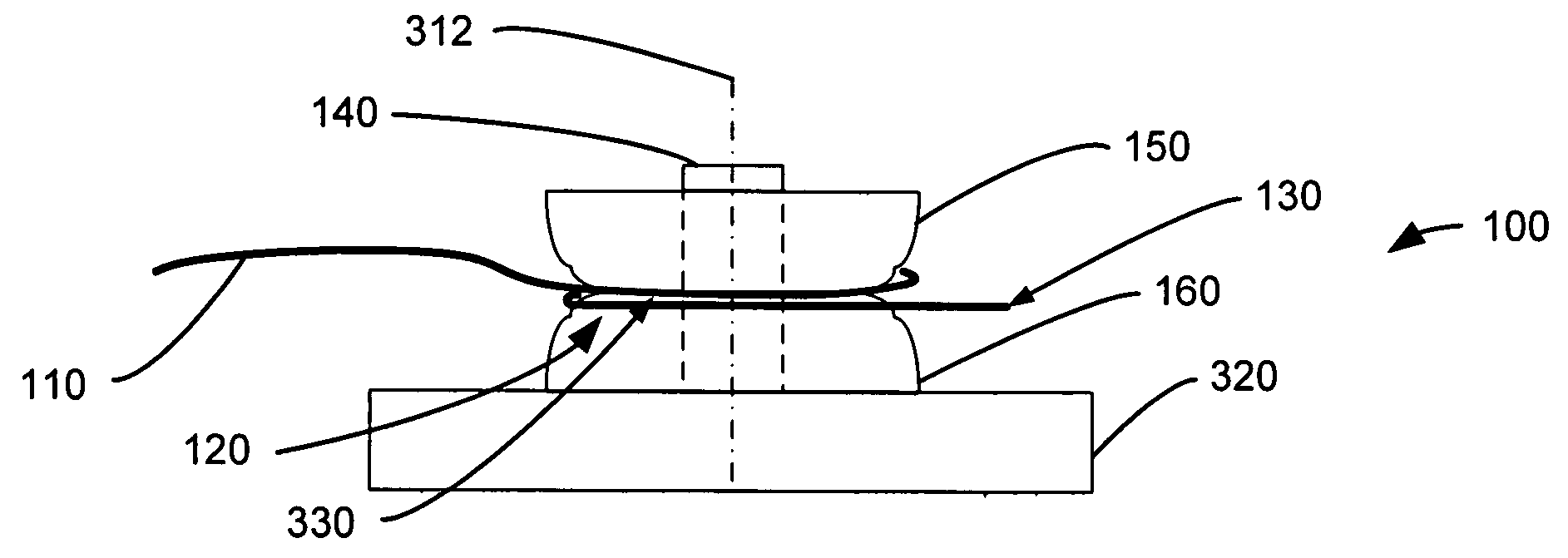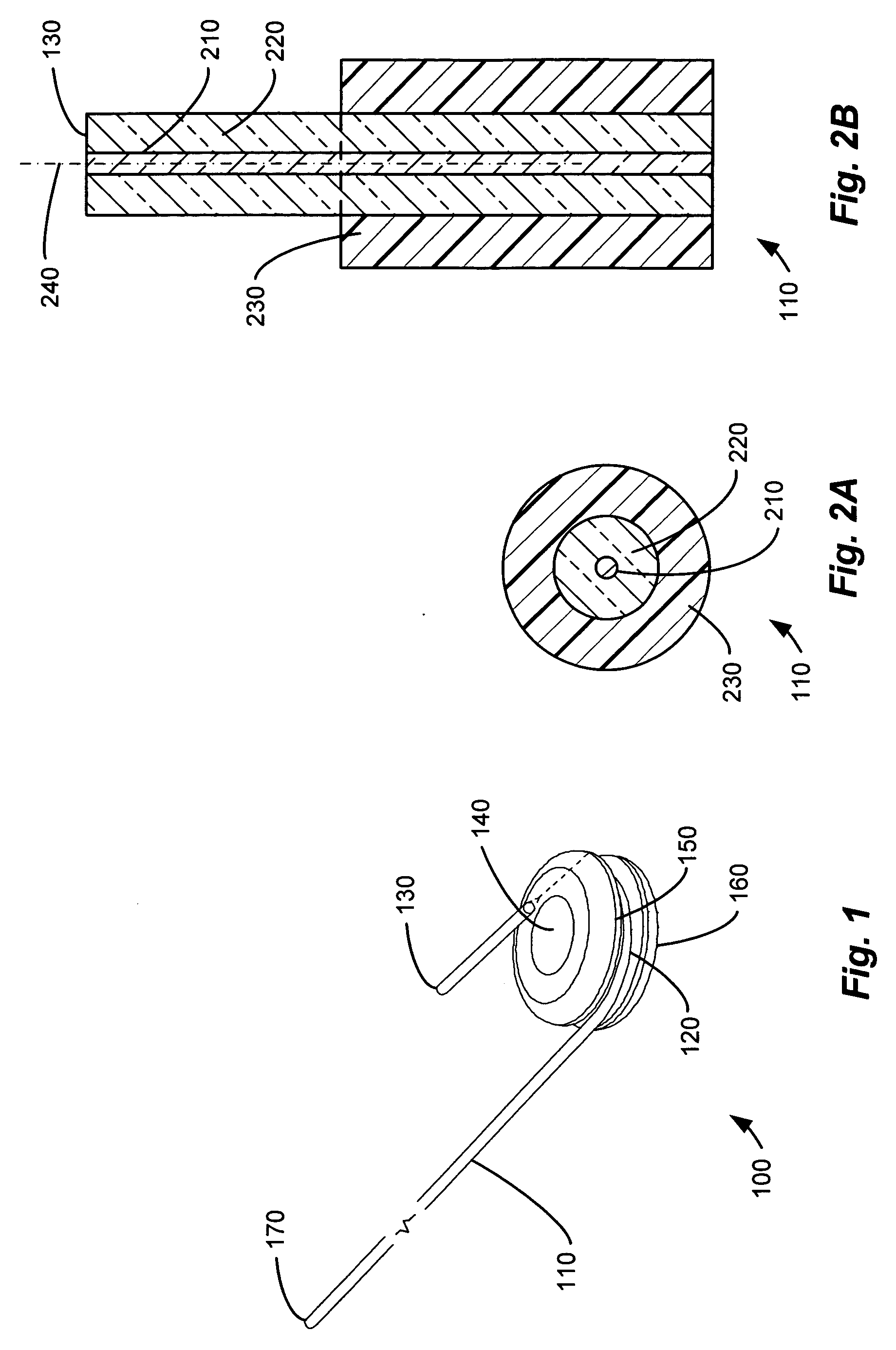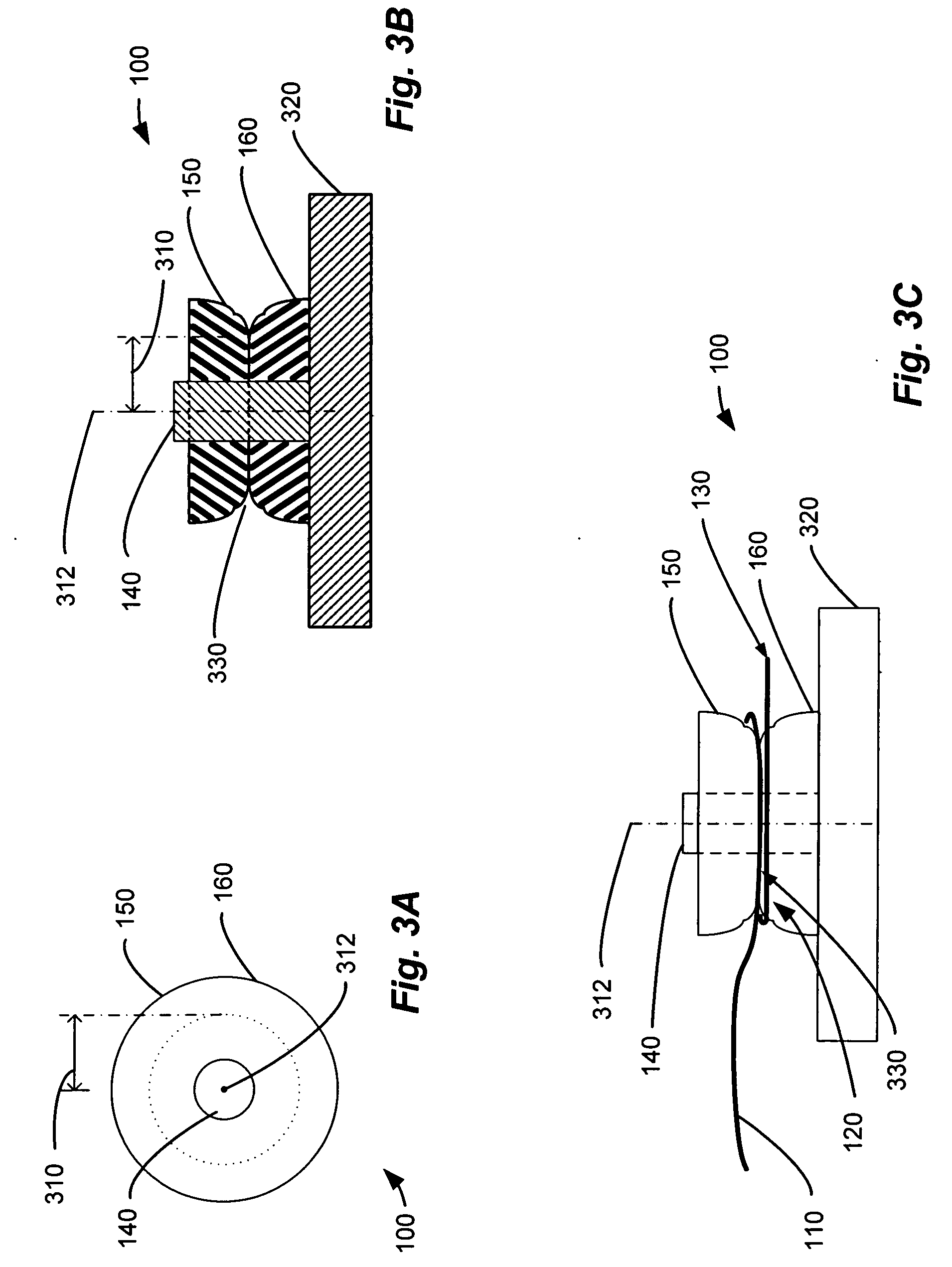Reflection suppression for an optical fiber
a technology of optical fibers and suppression devices, applied in the field of optical fibers, can solve problems such as performance problems, interference with network performance, and performance problems, and achieve the effects of suppressing back reflections, suppressing internal reflections, and suppressing reflections
- Summary
- Abstract
- Description
- Claims
- Application Information
AI Technical Summary
Benefits of technology
Problems solved by technology
Method used
Image
Examples
Embodiment Construction
[0037] Exemplary embodiments of the present invention support managing reflections in optical systems, such as suppressing internal reflections from an end face of an optical fiber. A termination attenuation spool attenuates light propagating forward in an optical fiber towards an exposed end face, and then attenuates the light internally reflected by the end face that back propagates in the optical fiber. Turning now to the drawings, in which like numerals indicate like elements throughout the several figures, preferred and exemplary embodiments of the invention will be described in detail.
[0038]FIG. 1 illustrates a perspective view of an optical fiber 110 coiled around a termination attenuation spool 100. One end face 130 of the optical fiber 110 is exposed to the surrounding environment, which is typically a gaseous medium such as air. The termination attenuation spool 100 includes a top section 150 and a bottom section 160. A cylindrical rod 140 joins the top section 150 and th...
PUM
 Login to View More
Login to View More Abstract
Description
Claims
Application Information
 Login to View More
Login to View More - R&D
- Intellectual Property
- Life Sciences
- Materials
- Tech Scout
- Unparalleled Data Quality
- Higher Quality Content
- 60% Fewer Hallucinations
Browse by: Latest US Patents, China's latest patents, Technical Efficacy Thesaurus, Application Domain, Technology Topic, Popular Technical Reports.
© 2025 PatSnap. All rights reserved.Legal|Privacy policy|Modern Slavery Act Transparency Statement|Sitemap|About US| Contact US: help@patsnap.com



